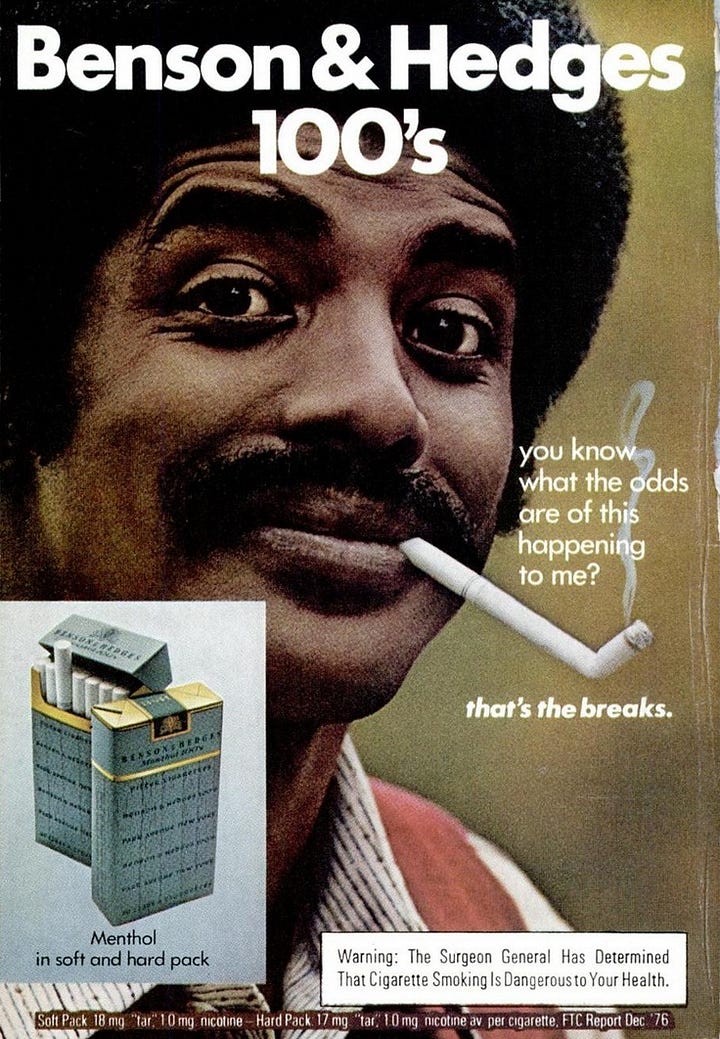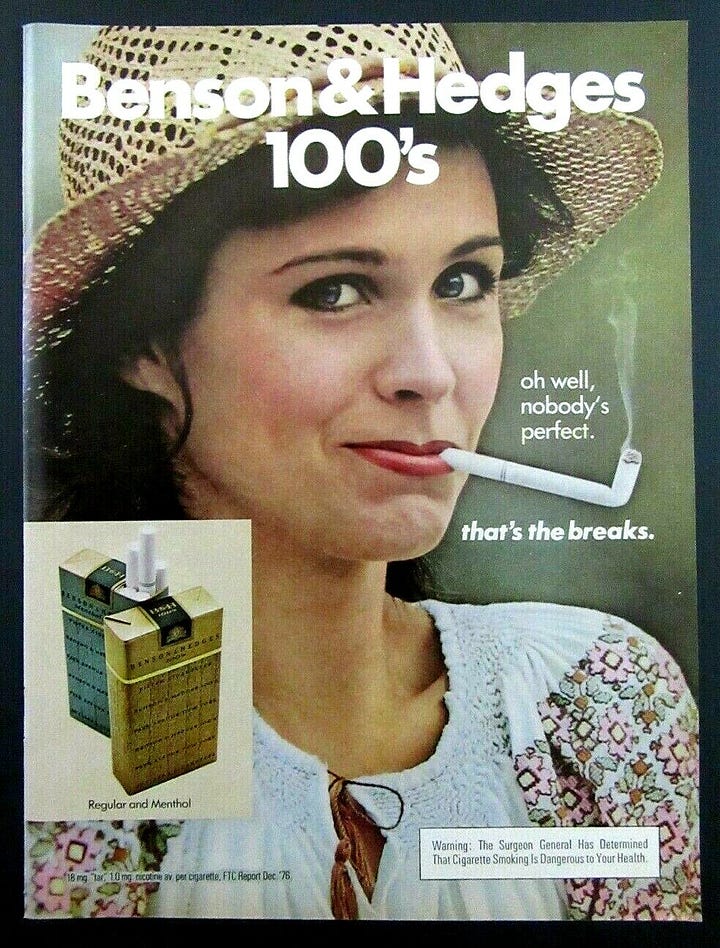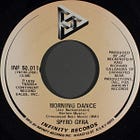As a child of the seventies who spent way too much of his pre-adolescent free time immersed in television and magazines, I was fascinated by the massive amounts of advertising space devoted to cars, alcohol and cigarettes. These were, or so I surmised, the three basic “food groups” of adulthood, and the choices you made about each of them were clearly supposed to define who you were as an adult.
The car thing I could easily understand. Though still many years away from getting my driver’s license, I was obsessed with automobiles both new and old. I went with some friends to the Detroit Auto Show at Cobo Hall on a couple of occasions, and came back each time with a giant stack of car brochures that I proceeded to study with the same focused intensity I would soon be applying to the backs of my baseball cards. While my friends were all into sports cars, I was drawn more to full-sized luxury sedans, a fixation which would eventually inspire my Corinthian Columns track “Blue Diamond Fire” — which some of you may also recognize as the theme for CROSSED CHANNELS, the monthly music podcast I do with my friend and colleague
.Alcohol made sense to me as well, even if the few sips of beer and wine I’d taken so far had all tasted pretty disgusting. TV beer ads portrayed the beverage as a necessary ingredient for any convivial adult gathering, and wine was likewise presented as a necessary ingredient for any romantic encounter. The appeal of the harder stuff — scotch, bourbon, vodka, gin — seemed more vague to me, though I loved looking at the different labels and colored liquids in my grandparents’ well-stocked liquor cabinet. I just figured that, like girls, booze would be something I’d appreciate a lot more once I got older.
Cigarettes, though, I didn’t get at all. Maybe it was because no one in my immediate family smoked, but the whole thing just seemed kinda strange to me. People actually paid money to inhale hot smoke through a small paper tube? And yet, any time my family went somewhere reasonably nice for dinner, my sister and I would inevitably gravitate at some point to the cigarette vending machine in the foyer, just because there was something really aesthetically attractive about seeing the different brand logos and packaging laid out like that. (Also, we loved the loud “thunk” sound that occurred when you pulled the machine’s levers.)
And even though I never aspired to become a smoker like I aspired to one day own a Lincoln Continental, I still managed to absorb all the cigarette advertising slogans and themes of the day. Newport? Alive with pleasure! Tareyton? Their smokers would rather fight than switch! Camel? Something something “The Turk” something something!
Which is why, when a friend of mine posted the following image on social media a few weeks ago, I immediately knew it was from a Benson & Hedges 100 ad, even though the brand info and ad copy — presumably included in the second part of a two-page spread — were missing from it.
The main clue was the bent cigarette. A fixture in Benson & Hedges advertising for about a decade, it humorously alluded to the various “disadvantages” a smoker might face when lighting up the company’s extra-long 100s. (“The Dis-Advantages of You,” a Top 40 instrumental hit in 1967 for The Brass Ring, was based on the Benson & Hedges 100 advertising jingle — this was back when tobacco companies could still air ads on TV and the radio.)
Unlike with some cigarette brands, Benson & Hedges didn’t seem to discriminate when it came to their chosen advertising demographic. Black and caucasian folks alike were regularly featured in their ads, all of them dealing with a pre-Kurtis Blow conception of “The Breaks”.


But in the case of the ad that my friend posted, the one with the elegant Black couple enjoying an evening spent smoking Benson & Hedges 100s and listening to music through a state-of-the-art home stereo system, the shoot’s art director appears to have gotten their signals crossed. Because while I can’t identify the other album covers in the photo, the red sleeve — despite having its identifying verbiage blurred out — is quite clearly that of For Earth Below, the 1975 album by British heavy blues-rock guitarist Robin Trower.
Now, I’m not saying that Robin Trower never had any Black fans. He’s an incredible musician who did some brilliant work with Procol Harum and as a solo artist that has appealed to a wide range of listeners — Bridge of Sighs is one of my all-time favorite headphone jams — and I do have a vague memory of hearing his smooth 1977 single “Sweet Wine of Love” once or twice on Chicago’s “Dusty Radio” station WGCI in the early nineties, which would lead me to believe that it got some degree of local R&B radio play back in the day.
I am, however, saying that the notion of this particular straight-laced brother luring the pictured lovely lady back to his shag-carpeted bachelor pad with the promise of some extra-long cigarettes and an eardrum-shattering blast of “Shame the Devil” cracks me up immensely. “Hey, Baby — do you dig Benson & Hedges 100s, the chewy psychedelic tone of a Stratocaster played through a Uni-Vibe, and James Dewar’s constipated grunt? You do? Let’s grab a cab back to my place!”
Have a great weekend, everybody.
You may also dig…










“Let’s grab a cab back to my place! I’ll sit in my comfy chair and you can — I dunno, sit on the floor in the corner!”
Uhhhhh - Brotha Dan?? This Black guy made great use of Mr. Trower's talents way back when. The "Bridge Of Sighs" album (+ Thai stick and/or windowpane) never failed Da Bopper. It was and still remains a part of my epic Ol' Skool Sex 'Em Up/Sex 'Em Down mixtape. I'm still coming out of boxes so no access to the hard drive it's stored on, but I believe I swapped it with Yusuf for his Motown stuff a few years back. Ask him if he still has it.